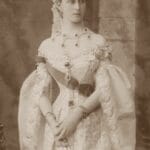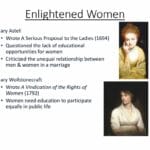Loretta Perfectus Walsh shattered gender barriers in 1917, becoming the first enlisted woman in the US Navy and its inaugural female Chief Petty Officer, serving a vital role during World War I. Her story is one of courage, determination, and a pioneering spirit that forever changed the landscape of the US Armed Forces.
A Pioneer in Navy Blue
Born in Philadelphia, Pennsylvania, on April 22, 1896, Loretta Perfectus Walsh entered a world where women’s roles were largely confined to the domestic sphere. However, the advent of World War I and the increasing need for personnel in the US Navy presented an unforeseen opportunity for change. On March 17, 1917, at the age of 20, Walsh boldly stepped forward and enlisted in the US Naval Reserve, becoming the first woman to do so outside of the nursing corps. This act of defiance against societal norms signaled a shift in the perception of women’s capabilities and their potential contributions to national service. Margaret Shippen, another woman of this era, also challenged societal expectations, albeit in a vastly different context.
Serving Her Country: Duties and Responsibilities
Just four days after her enlistment, on March 21, 1917, Walsh achieved another milestone: she was sworn in as Chief Yeoman (F), becoming the Navy’s first female Chief Petty Officer. The “F” designation, standing for “female,” underscored the novelty of a woman holding such a position. As Chief Yeoman, Walsh took on vital administrative responsibilities, managing paperwork, organizing records, and ensuring the smooth flow of information–essential tasks for the efficient operation of the Navy, particularly during wartime. While the exact details of her daily work remain an area of ongoing research, historians suggest that her role likely extended beyond routine administrative duties, perhaps including mentoring other women who followed in her footsteps.
A Legacy of Inspiration: Impact and Influence
Walsh’s service during World War I was not merely symbolic; it was a practical demonstration of women’s ability to contribute meaningfully to the war effort. Her presence in a traditionally male-dominated environment challenged prevailing societal norms and paved the way for a more inclusive military. Over 13,000 women, inspired by Walsh’s example, subsequently joined the Navy, becoming known as “Yeomanettes.” This influx of women not only supported the Navy’s wartime operations but also contributed to the broader women’s suffrage movement, further amplifying the impact of Walsh’s actions. It is interesting to consider how different social landscapes, like the Maria Tallchief Quarter, evolved alongside these shifts in women’s roles.
A Life Cut Short: Death and Remembrance
Tragically, Walsh’s groundbreaking career was cut short. On August 6, 1925, at the young age of 29, she succumbed to pneumonia, likely a complication of the influenza pandemic that swept the globe a few years earlier. While her life and naval service were brief, her impact reverberates through history. Walsh’s unwavering dedication, courage, and pioneering spirit continue to inspire generations of women to pursue military careers, leaving an enduring legacy within the US Navy and beyond.
Frequently Asked Questions about Loretta Perfectus Walsh
How long did Loretta Walsh serve?
Loretta Perfectus Walsh served in the US Navy for approximately eight years, four months, and twenty days, from March 1917 until her untimely death in August 1925.
Who was the first female Chief Yeoman in the Navy?
Loretta Perfectus Walsh holds the distinction of being the first female Chief Yeoman in the US Navy, achieving this rank in 1917.
What did Loretta Perfectus Walsh do in World War I?
As Chief Yeoman (F), Walsh played a critical administrative role during World War I, ensuring the efficient flow of information and the smooth operation of the Navy. Ongoing research may reveal further details about her specific duties and contributions.
While much is known about Loretta Perfectus Walsh’s achievements, some aspects of her life and service remain subject to ongoing research. Historians continue to explore the nuances of her experiences, seeking a more complete understanding of the challenges she faced and the full extent of her influence. Her story serves as a powerful reminder that even seemingly short periods of service can have a profound and lasting effect on history, and that individual courage can break down barriers and pave the way for a more inclusive future.
- Unveiling Bernhard Caesar Einstein’s Scientific Achievements: A Legacy in Engineering - July 15, 2025
- Uncover who is Jerry McSorley: CEO, Family Man, Business Success Story - July 15, 2025
- Discover Bernhard Caesar Einstein’s Scientific Contributions: Unveiling a Legacy Beyond Einstein - July 15, 2025














